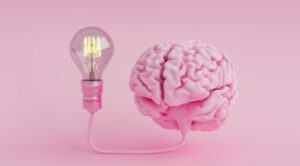In modern marketing understanding, the factors that influence consumer buying behavior are considered under four main categories: cultural, personal, social and psychological. These factors play a central role in understanding consumer behavior and shaping marketing strategies. Consumer behavior is influenced by a number of individual and non-individual factors. Individual factors include needs, motives, perceptions, attitudes, experiences, self-concept and values. Marketing managers use psychological methods to understand and evaluate consumers’ emotional responses to products and services and the motivations behind their purchasing decisions. The gender factor has both a psychological, biological and sociological basis. In this blog post, we will compare the male and female brain.
First of all, female consumers tend to be highly brand loyal and relationship-oriented. With the trust they have in the brand, they pass on their own experiences with positive opinions from friends, relatives and other relatives. Research on the relationship between gender and clothing has shown that girls are more interested in clothes and brands than boys. In many societies, women are more interested in beauty, appearance and fashion than men.
Women generally do more product research and tend to compare prices. Men in particular were found to dislike shopping more than women, to move around faster in stores, to look around more quickly and not to pay attention to products they are not interested in. In Cüceloğlu’s study, it was stated that women enjoy walking around slowly in stores, make comparisons between products, give importance to product experience and pay attention to salespeople during the product purchase process. In addition, it was observed that women buy the products they plan to buy decisively and are satisfied with shopping.
Women tend to shop with more information from sources such as social media and online reviews. Men usually shop based on the knowledge they already have about a particular product and do less research. Emotional attachment can also play an important role in men’s buying behavior. Emotional factors can come into play, especially when buying products related to their hobbies or interests. Men often take a quick and direct approach to shopping. They tend to buy as soon as they find the product they are targeting.
As a result, it is important for brands to conduct marketing activities according to the brains and behaviors of men and women. Today, with neuromarketing tools, such differences can be easily detected and the behavior, attitudes and emotions of consumers can be objectively analyzed.
Reference: Psychologist Merve Altındağ
Çetin, K. (2018). SATIN ALMA DAVRANIŞLARINDA KADINLARIN GİYSİ MARKASI TERCİHLERİNİ ETKİLEYEN FAKTÖRLER. Uluslararası Turizm Ekonomi ve İşletme Bilimleri Dergisi, 2(2), 354-366.
Villi, B., & Kayabaşı, A. (2013). Kozmetik ürünlerde kadınların dürtüsel satın alma davranışlarını etkileyen faktörlerin analizi.




